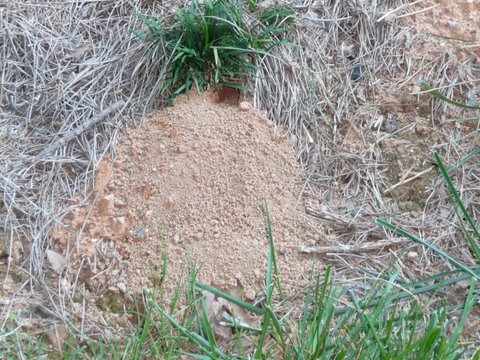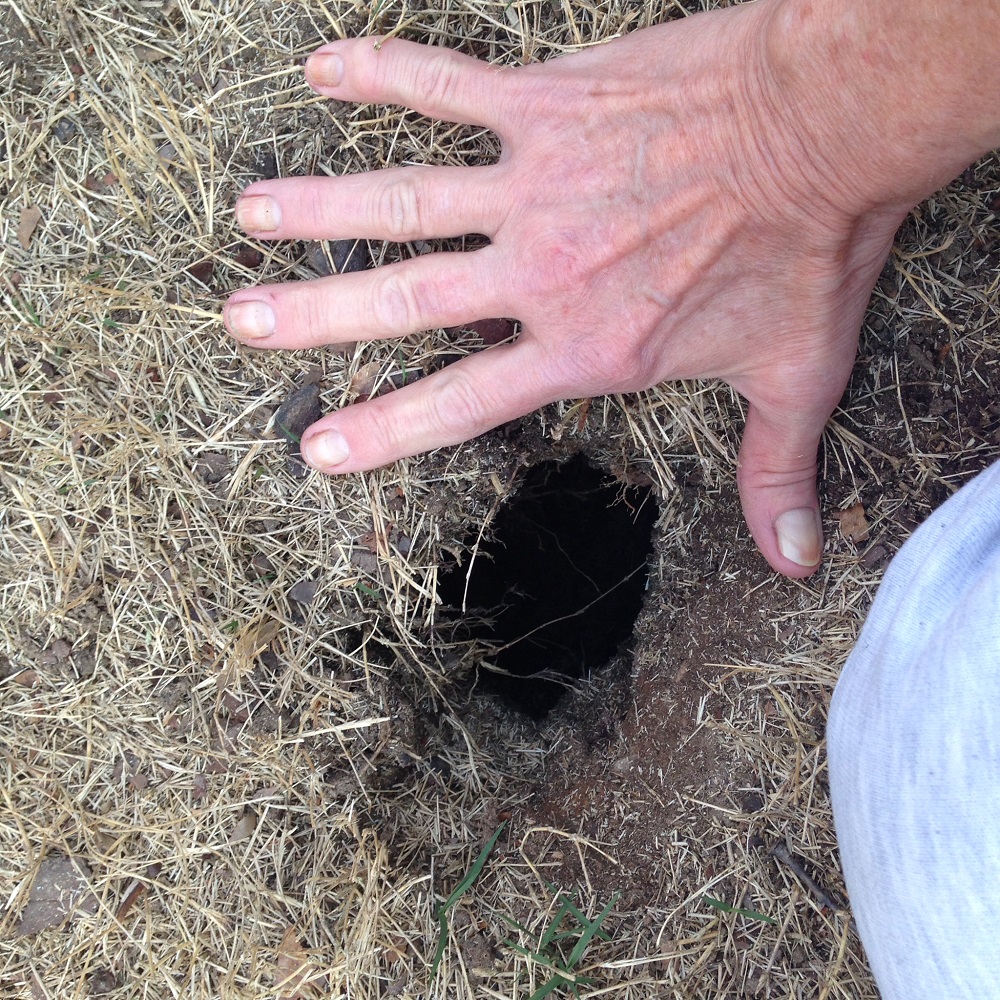Diagnosing (Identifying) Holes in the Yard

Sometimes many heads are better than one when it comes to solving a problem. Wade Hutcheson, my Extension colleague in Spalding county, gets plenty of calls from the citizens of his area asking his help in identifying various holes in their landscapes. Wade is certainly familiar with several of the common causes and culprits but he posed a general question to the other metro Atlanta agents recently.
“How do you folks answer questions about what’s digging holes in a yard? Sometimes the holes are grapefruit size, sometimes golf ball size. Some holes are deep but some are described as shallow. Sometimes there are piles of dirt and sometimes not. Rarely do my clients see a creature making the hole. If moles, ground bees, chipmunks, and the neighbor’s dog are ruled out, what’s left?
SOIL SUBSIDENCE? My radio work makes me a keen listener to the descriptions my callers use when they describe landscape holes to me. After they tell me a little about their hole, my first question is this: “Is there any dirt mounded on top of or scattered around the hole?”
If loose dirt is present, I have to conclude that some yet-to-be-determined creature put the soil there. If there is no soil around the hole, it probably was caused by soil subsidence from a trash pit or rotted stump or decomposed root underneath.
Stumps are often covered up by a builder as they grade a lot before construction. Five years later, termites have had several nice meals underground and not much wood tissue is left. A heavy rain collapses the soil above the hollow, making a hole that mystifies a homeowner who never knew the stump was there.
Likewise, tree roots don’t live forever underground. They often die due to drought. When they decompose, the hole is often oblong but shallow. Obviously, the only thing to be done when the soil subsides is to fill the hole with topsoil, plant grass if necessary and go about your business.
WHAT IF SOIL IS PRESENT? If soil is piled around the hole, a creature did the deed. Since animals and insects of different sizes can make holes in the landscape, my second set of questions to radio callers is: “How big is the hole? What does the soil mound look like? Where is it located?”
From then on it becomes a matter of matching the hole to the probable excavator. Since spring is a common time to notice different landscape holes, I’ve prepared a table to help you diagnose your own hole situation.
THE FOLLOWING TABLE LISTS VARIOUS HOLE DIMENSIONS, SOIL CONDITIONS AND HOLE LOCATIONS, FOLLOWED BY THE CREATURE RESPONSIBLE
12 – 36 inches in diameter, thoroughly plowed three inches deep, in flowerbed: armadillo
6 – 10 inches in diameter, no mound, scattered in lawn: skunk or raccoon
6 – 10 inches in diameter, mound four inches high, near garden or barn: groundhog
2 inches in diameter, no mound, scattered in lawn: squirrel digging acorns
2 inches in diameter, small mound one inch high, under a shrub, log pile or concrete slab: chipmunk or rat
2 inches diameter, small mound, in lawn with markedly raised grass nearby: mole
1 inch diameter, no mound, next to hosta: vole
1 inch diameter, soil thinly scattered around hole, edge of the yard: cicada killer wasp
1 inch diameter, two inches high and made from balls of mud, near creek: crayfish
One-fourth inch diameter, mound two inches high & wide, several in middle of the lawn: ground bee
No hole, mound two inches high & wide, several in middle of the lawn: earthworm
As well diggers might joke, their work involves lots of deep thinking! I’m hopeful my table will help you solve landscape hole puzzles without a great deal of thought.

cicada killer hole


















